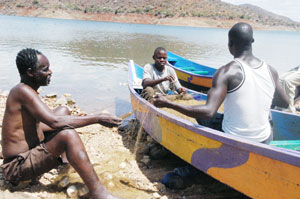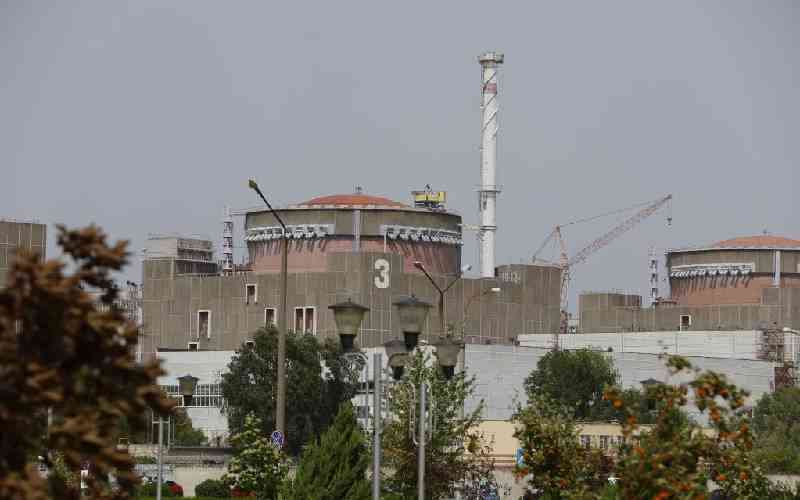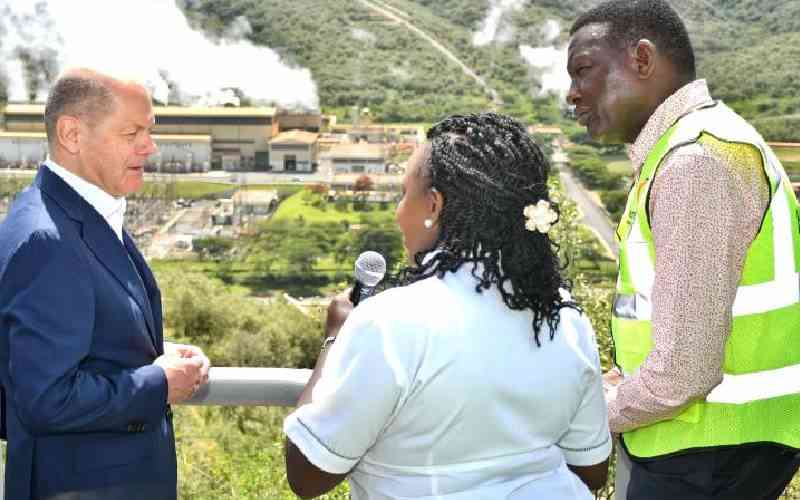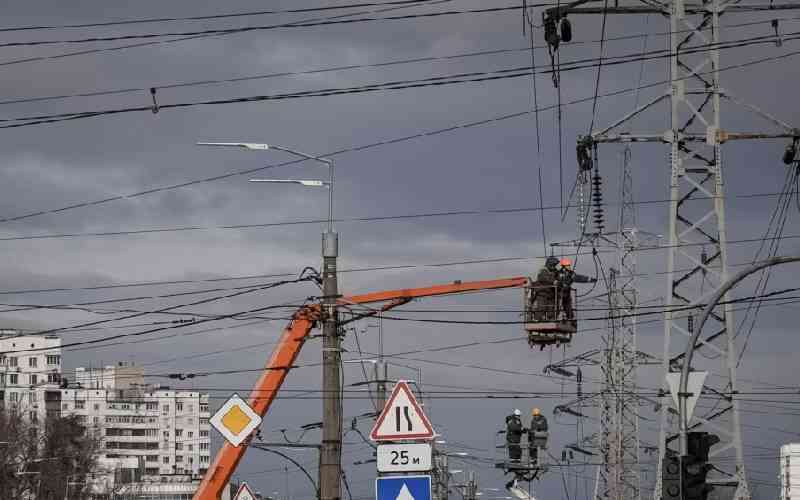By Isaiah Lucheli
The mention of the Turkwel Hydro Electric Power Plant in Pokot District evokes image of electricity generation to many Kenyans but for several residents, it is a double blessing.
The construction of the 15km long artificial dam brought with it a new way of life — fishing.
"Previously we depended on livestock as the only source of livelihood. The dam has transformed our lives. We learnt fish trade from the people who settled here from shores of Lake Victoria during the construction of the dam," says Mary Losiwo. |
Joash Abong’o and friends. Fishing is a new source of living for Pokot residents. [PHOTOS: Peter Ochieng’/STANDARD] |
Ms Losiwo says when Kerio Valley Development Authority (KVDA) introduced varieties of fish fingerlings in the dam to diversify their sources of livelihood in the 1990s, little did they know it would be a lifeline.
"We used to depend on livestock but fish has provided an alternative source of income and more locals are engaging in the business," she adds.
Fishmongers now urge the Government to provide them with a ready market for their catch and improve the transport network. This is a restricted area and vehicles rarely get access to the dam shores. This greatly affects residents’ market penetration.
Most of the fishermen settled in the area as masons and casual labourers during the construction of the dam in 1980s. The late Thomas Owuor is credited with introducing fish business in 1990. He constructed the first boat at the shores.
His son Boniface Rongi says fishing has become a lucrative business.
Rising supply
"I have been operating at the dam for more than 10 years. I have been earning enough to fend for my family," he adds.
Rongi says the market must be expanded to cater for different products and the increased number of fishermen.
"In early 1990s fishermen were few but more people are now joining the business. We work as a team and share the proceeds," he explains.
Rongi hails from Karachuonyo in Nyanza Province. He says fishermen get timber for the construction of boats from Kitale.
Stay informed. Subscribe to our newsletter
Another fisherman, Joash Abong’o, says the main species of fish introduced by KVDA include tilapia, salmon and mudfish, which he says are in high demand.
"We supply the fish to the locals and the surplus is sun-dried and sold in Kitale and several parts of Western Province," adds Abong’o. He says Owuor and his friend Francis Ondiek trained them on how to fish.
"We start fishing in the morning at the shores, heading towards the Morogorio and Kasses islands, at the middle of the dam," says Abong’o. "We then proceed to Ponpon Island where we spend a night before sailing back to the shores."
KVDA acting Managing Director Julius Mutuaruchu says the authority is happy to offer locals an alternative source of income. The MD assures the fishermen that even though the dam water levels have dropped, their business is still safe.
No cause for alarm
"The water level has dropped by more than 15m due to prolonged drought. The seasonal rivers — Suam and Kanyangmer — that feed the dam have dried up but fishermen have no cause for alarm," he adds.
Besides, residents also use the water for irrigation, which the KVDA official says they intend to establish improved and better-managed schemes to ensure food security.
 The Standard Group Plc is a
multi-media organization with investments in media platforms spanning newspaper
print operations, television, radio broadcasting, digital and online services. The
Standard Group is recognized as a leading multi-media house in Kenya with a key
influence in matters of national and international interest.
The Standard Group Plc is a
multi-media organization with investments in media platforms spanning newspaper
print operations, television, radio broadcasting, digital and online services. The
Standard Group is recognized as a leading multi-media house in Kenya with a key
influence in matters of national and international interest.
 The Standard Group Plc is a
multi-media organization with investments in media platforms spanning newspaper
print operations, television, radio broadcasting, digital and online services. The
Standard Group is recognized as a leading multi-media house in Kenya with a key
influence in matters of national and international interest.
The Standard Group Plc is a
multi-media organization with investments in media platforms spanning newspaper
print operations, television, radio broadcasting, digital and online services. The
Standard Group is recognized as a leading multi-media house in Kenya with a key
influence in matters of national and international interest.









